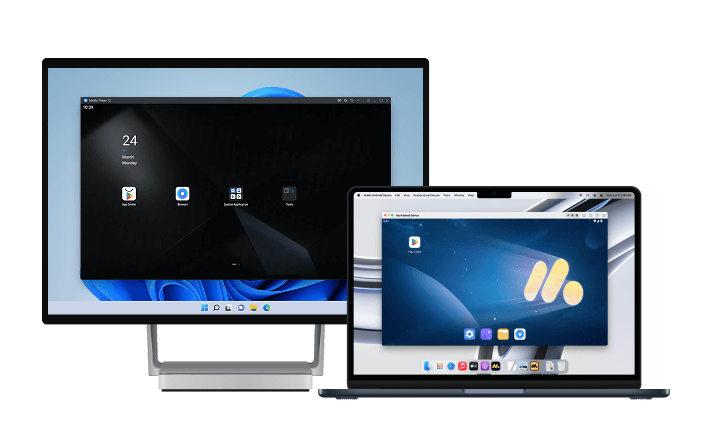FIFA Soccer: Guide for Beginners
Now available for download and play, the new FIFA Soccer offers players a fresh opportunity to compete at the top level in the current leagues and game modes. This is fantastic news for returning players as well, as new beginnings always present an opportunity to advance. Yet, it can be difficult for fresh players who are only trying out the game for the first time to understand what to do and how to play. This guide is meant for the latter group of players because it contains many fundamental facts and advice regarding FIFA Soccer that will enable you to start off strong in this soccer simulation game.

Everything You Need to Know to Start Out Strong
1. The Primary Launch Challenges
FIFA Soccer really does quite a fantastic job of teaching you the fundamentals, which is accomplished through the Kick-Off mode, unlike some games that would throw you right into the action with little to no context. The challenges and tutorial scenarios in this part are made to teach you how to use the controls and how to dribble, pass, and shoot your way to victory. While they don't really show you how the actual matches go, they will indeed provide you with the information you need to succeed.

The Kick-Off challenges are also an excellent source of rewards that can really help to raise the quality of your team, and this is all without mentioning them. Overall, they're a fantastic place to start, and you should pay close attention to what they have you learn in these early levels.
2. Standard game controls
However, in case you forgot or weren't paying attention, here is a review of FIFA Soccer's fundamental controls.

Your players can pass, center, cross, and shoot the ball in a variety of ways to start team plays and score goals during games. Although they will always make an effort to comply with your requests, you really have little control over how your players actually carry out their acts. Of course, a player's success is always dependent on a variety of variables, including their stats. Sometimes, asking too much of a player with poor stats might result in missed passes or shoots, or the player may completely get blocked by the opposing defenders.

Every action in FIFA Soccer has a dedicated button, and those buttons change dynamically based on the situation. You will have buttons for defending and tackling, for example, if you are defending. The same controls will switch into passing, through-passing, shooting, and running if you're on the attack.
Instead, you can use gestures, like as swiping or tapping on the screen, to control the majority of the offensive moves in FIFA Soccer. For instance, to direct your player's shot in the appropriate direction when about to shoot, swipe in the direction of the opponent's goal rather than pressing the button. In addition, you can tap on a teammate to deliver the ball to them, or you can tap in front of them to make a cross or a through-pass. Your player will decide which option is best based on the situation.
3. Formation of Your Team
The players you put onto the field are, of course, another crucial factor in winning games. After all, having years of experience playing FIFA on mobile won't help you much if you don't have the players to support your abilities. In other words, even if you are a skilled player, you could find it challenging to pass, shoot, and defend effectively if your team has poor stats.

The most crucial statistic that provides you a rough impression of your team's strength is its OVR, which is shown clearly on the main menu screen and in large letters in the "My Team" menu. Since the OVR statistic is an average of all your players' OVR data, a higher OVR typically indicates a better team. And the better your possibilities of scoring are, the higher this statistic is in relation to the opposition.
While less crucial, your formation can nevertheless have a significant impact when playing certain teams. As most other formations are gradually unlocked as you continue through the game, you really don't need to worry about it too much in the beginning, which is why we believe it's not as crucial. But, based on the enemy formation, you might modify your own to counter their advantages or to take advantage of them. Please keep in mind that changing your formation might affect both your team and the enemy's, so take in mind the strengths of your players as well.

But, despite its significance, there are other stats besides OVR that are also significant and can help players perform better in particular circumstances, which takes us to our next topic.
4. Set Pieces and Individual Statistics
You can fine-tune each player's specific strengths for your current formation and choose your current set pieces by clicking on each individual player on your formation in the "My Team" menu to view a detailed analysis of their attributes.

On the other side, your set pieces are also available through the same menu, and this is where you select the players who will be in charge of carrying out particular tasks during games, like short and long free kicks, corner kicks, and penalties, as well as your team captain.
With all that being said, you should select your set pieces and assign your players to their locations within your formation taking into account both their individual stats and their OVR. It all depends on context, which will give you the advantage when adjusting the skills of your team. For example, a tall attacker can be better suited than a shorter one when trying to score goals from corner kicks, even though the latter might have a better OVR.

Alternatively, you could just rely on the auto-assign option, which will place the players with the highest OVR in their appropriate places, perhaps causing you to lose out on optimization possibilities while saving you a lot of effort.
5. Train and Upgrade Your Players
Buying new players and swapping out the inferior ones in your formation is, at least at the beginning, the best and most direct approach to raise your team's OVR. Yet, because the best player cards can be extremely expensive, this may be unaffordable. Fortunately, there are additional ways to somewhat increase your OVR outside finishing the Kick-Off tasks, which can help you earn a few good cards early on. These other ways include training your players.

You can select certain players to train them by clicking on their names in the "My Team" menu. You achieve this by sacrificing other player cards in the same position in order to get experience points (XP), which will help your characters level up. Also, a player's stats will rise as they level up, enhancing their powers. Their OVR will eventually rise as well, increasing your chances of winning.
With that being said, even players with lower stats have value in FIFA Soccer because you may use them to improve your greatest cards. Also, the player you sacrifice will grant you more XP the better they are.
Final Thoughts
We realize that this may seem like a lot to take in at first, but even if you don't initially require them, it's still beneficial to master the basics of FIFA Soccer. We're confident that this knowledge will come in handy in the future.
End of Article





